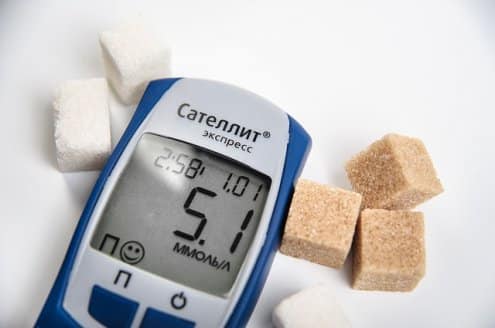Understanding novolin vs lantus helps you compare intermediate-acting NPH with long-acting glargine. This overview explains pharmacology, dosing patterns, timing with meals, and safe switching principles.
Key Takeaways
- Core difference: NPH peaks; glargine provides flatter basal coverage.
- Dosing cadence: NPH often twice daily; glargine usually once daily.
- Switching requires caution to avoid hypoglycemia or hyperglycemia.
- Pens and vials differ in handling, priming, and waste.
- Coordinate basal with mealtime insulin to reduce stacking risk.
Novolin vs Lantus: Core Pharmacology and Profiles
NPH insulin (isophane, human insulin) is intermediate-acting. It forms microcrystals that dissolve over time, which creates a defined peak several hours after injection. This peak can lower glucose effectively but may raise hypoglycemia risk if meals or snacks do not match the action curve. In contrast, insulin glargine (Lantus) is long-acting and designed to precipitate in subcutaneous tissue, releasing slowly for a relatively peakless profile.
Because of these kinetic differences, NPH commonly supports twice-daily basal coverage, while glargine often serves as a once-daily basal foundation. Regulatory documents describe these characteristics consistently; see the FDA label for Lantus for pharmacology details and switching cautions FDA label for Lantus. For an accessible overview of insulin types and their effects, the CDC provides practical summaries on basal versus bolus action CDC insulin basics.
Dosing Patterns and Clinical Use
Basal strategies aim for steady background insulin to restrain hepatic glucose output between meals and overnight. With glargine, many adults inject once daily at a consistent time. With NPH, twice-daily dosing can smooth coverage over 24 hours, acknowledging its midcourse peak. The phrase how many units of lantus is normal lacks a single answer because needs vary with weight, diet, activity, and concurrent medications.
Care teams often start conservatively and titrate using home glucose data, avoiding aggressive changes without supervision. For a structured walkthrough of basal choices and titration concepts, see Basal Insulin Dosing for stepwise methods and safety notes Basal Insulin Dosing. If you prefer category-level reading that spans many dosing topics, explore Diabetes Articles for broader context across treatments and monitoring Diabetes Articles.
Onset, Peak, and Duration Differences
Timing shapes day-to-day glucose stability. NPH typically begins working within a couple of hours, peaks midway, and fades by the next dose window. In practice, novolin n requires consistent meals and possibly planned snacks timed around its peak effect. Insulin glargine generally takes effect within a few hours and provides a flatter, longer plateau, often approaching 24 hours in many adults.
Understanding these timelines helps align meals, exercise, and correction dosing. For a visual comparison of onset, peak, and duration across common products, see Insulin Onset and Duration for charts and examples Insulin Onset and Duration. If you want a focused primer on the intermediate class, consult Intermediate-Acting Insulin for definitions and typical day curves Intermediate-Acting Insulin.
Delivery Forms and Handling
Both NPH and glargine are available in vials for syringes and in prefilled pens or cartridges. Pens can improve convenience and dose accuracy for many users, though correct priming and needle changes remain essential. A novolin r pen may be used for short-acting regular insulin in some regions, while NPH pens are also common; availability varies by market and product line.
Storage, in-use time, and handling differ slightly among products. For details on the long-acting option in vials, see Lantus Vial Overview for in-use times and storage thresholds Lantus Vial Overview. If you are choosing between device types, Insulin Pen vs Syringe compares technique steps and usability considerations Insulin Pen vs Syringe. When ready to review device specifics, Lantus SoloStar Pens provides device capacity and priming reminders for pen users Lantus SoloStar Pens.
Switching Basal Regimens Safely
Moving from NPH to glargine, or vice versa, requires a cautious plan. Differences in peaks, duration, and day-to-day variability can change hypoglycemia risk. Clinicians often adjust total daily basal dose when transitioning, especially if moving from split-dose NPH to once-daily glargine. An insulin conversion calculator may support planning, but professional oversight remains essential to interpret results and tailor steps.
For an overview of methods used by clinicians, see Insulin Conversions for stepwise approaches and example scenarios that compare dose frameworks Insulin Conversions. Product labeling also outlines specific cautions when switching basal types; for instance, glargine labeling addresses dose adjustments from twice-daily NPH to once-daily glargine FDA label for Lantus.
Common Conversion Scenarios
Two examples illustrate why transitions merit attention. When moving from twice-daily NPH to once-daily glargine, providers may reduce the basal dose to mitigate nocturnal lows as the flatter action replaces a peaked profile. They then monitor fasting and pre-dinner glucose closely over the next several days to adjust in small steps. The reverse transition, from glargine to NPH, might involve splitting the basal into morning and evening doses to cover 24 hours while respecting the midcourse NPH peak. In either case, consistent self-monitoring and meal timing help prevent unexpected hypoglycemia during the first adjustment week.
Mealtime Coordination and Stacking Risks
Basal insulin manages background needs, while rapid or short-acting insulin covers meals and corrections. Coordinating these layers avoids stacking, where overlapping doses lower glucose more than intended. The question how long after taking novolog can you take lantus reflects this timing concern. In practice, the two serve different roles and can be taken on schedules that minimize overlap and reduce overnight lows.
When using regular human insulin at meals, its slower onset and longer tail require extra spacing from snacks and bedtime doses. For timing specifics and examples of meal coverage, see Short-Acting Insulin for onset windows and taper periods that affect stacking Short-Acting Insulin. If you need regular insulin timing details, Regular Insulin Onset outlines typical start, peak, and finish intervals for predictable meal planning Regular Insulin Onset.
When to Choose One Over the Other
Choice depends on lifestyle patterns, hypoglycemia risk, and comfort with peaks. People who prefer once-daily basal coverage and fewer daytime swings may lean toward glargine. Those with established routines that match NPH peaks, or who use premixed products with fixed ratios, may prefer the intermediate approach. The lantus generic name is insulin glargine, and the human intermediate option is NPH insulin (isophane).
Premixed combinations can simplify dosing by pairing NPH with short-acting insulin in fixed ratios. These can suit consistent meal timing but may reduce flexibility. For background on blended regimens, see Premixed Insulin Guide for composition ratios and timing considerations across common mixes Premixed Insulin Guide. If you are comparing intermediate formulations, Novolin N vs Humulin N discusses formulation nuances and interchangeability within the NPH class Novolin N vs Humulin N.
Note: Product availability, pen formats, and in-use times differ by region and manufacturer. Always verify the specific product’s instructions for storage temperature, room-temperature time limits, and needle compatibility before use.
Recap
NPH (intermediate) and glargine (long-acting) differ in peaks, duration, and dosing cadence. Matching these profiles to meals, sleep, and activity helps stabilize glucose while limiting lows. If switching regimens, use a cautious plan, adjust gradually, and monitor closely. Internal resources linked above provide practical timelines, device guidance, and stepwise conversion concepts to support informed conversations with your care team.
This content is for informational purposes only and is not a substitute for professional medical advice.


